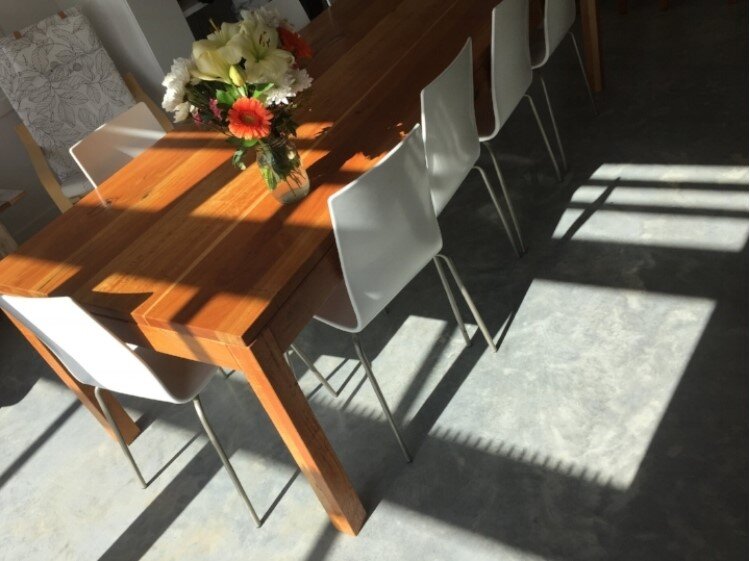Winter energy bill time... how did Jenny's house fare?
Are you getting nervous about your winter energy bill? The moment of truth arrived in my email box this morning. How much energy have we consumed over the last quarter in our new, all-electric family home without any heating in the living areas and bedrooms? A quarter that included a particularly severe winter... and noting that our household includes several people who enjoy very long showers! (For more background on Jenny's house and data logging project click here).
Before I continue, for those of you in existing houses with less than ideal orientation: don't give up hope! There are some simple and cost-effective ways to reduce your energy bills - see a great article with 22 tips here and check out the Light House science and retrofit advisory services here.
Electricity usage at Jenny's house May - Aug 2017
So our electricity consumption was equivalent to that of a one person household (noting that many of these comparison households also use gas for heating, hot water and cooking). We're pretty happy with that but as we don't have any heating apart from a 600W far-infrared panel on the ceiling of each bathroom, how did we fair in terms of thermal comfort? Were we miserable, freezing and sick all winter? No we weren't.
The graph below shows the daily minimum to maximum range for our front kitchen/dining/sitting area (in green) and our east/west glazed lounge that sits to the south of this space (in black). The larger blue zone shows the daily external minimum-maximum range inside our front, northern courtyard wall - the minimum temperatures measured here are generally a few degrees warmer than the air temperature as measured by BOM.
The daily minimum-maximum temperature ranges in the two living areas of the home (green and black) and the external minimum-maximum inside our front courtyard wall.
BUT LESS THAN 15 SOUNDS FREEZING! AN IMPORTANT POINT: The radiant temperature of our environment and air movement dominates our sense of comfort, not air temperature. In winter our environment is “cold walls, floors and ceiling and chilly draughts” and in summer our environment is “hot walls, floors and ceiling”. Our bodies primarily react to this – emitting our own body heat out to the cold surfaces in winter, and absorbing heat energy from them in summer. In this house the internal surfaces of the well-insulated and sealed building envelope stay at comfortable temperatures. This combined with the lack of air leaks and draughts means the home still feels comfortable even when the air temperature drops below 15 degrees in some rooms. (In summer the air movement created by ceiling fans, makes us feel 2-3 degrees cooler without changing the air temperature... the same happens in winter if your house is draughty or if your heating system is causing air to move past you.)
I am very happy to admit that we will install small infrared heating panels in the living areas before next winter . This will allow us to give the house that small injection of energy it needs when we experience overcast periods or if we have been away for a few days. We don't need anything in the bedrooms - everybody is sleeping just fine. (UPDATE May 2018: Jenny's partner, David, is such an enthusiastic convert to sustainable house design that he wants to go another winter without any heating to the living areas - stay tuned for winter#2 data.)
Its been great to get some baseline data for a fairly typical Light House (there are more than 50 around Canberra now). Having monitored some existing Canberra houses in the past I know we are very lucky to be in such a temperature stable, comfortable and healthy indoor environment.
Jenny's dining/sitting room on a cold day in early August (notice the shadow of the new pergola with fixed angle louvres close to the house which will completely block the summer sun).



